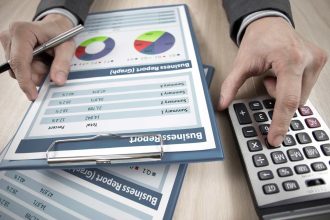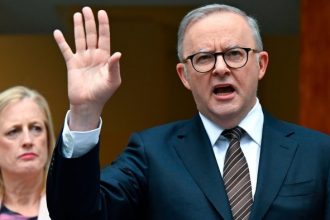(Reuters) – The labels “dove” and “hawk” have long been used by central bank watchers to describe the monetary policy leanings of policymakers, with a dove more focused on risks to the labor market and a hawk more focused on the threat of inflation.
The topsy-turvy economic environment of the coronavirus pandemic sidelined those differences, turning U.S. Federal Reserve officials at first universally dovish as they sought to provide massive accommodation for a cratering economy, and then, when inflation surged, into hawks who uniformly backed aggressive interest rate hikes.
Now, as Fed policymakers note improvement on inflation and some cooling in the labor market, the risks are seen as more balanced and the choices more nuanced.
All 12 regional Fed presidents discuss and debate monetary policy at Federal Open Market Committee (FOMC) meetings that are held eight times a year, but only five cast votes at any given meeting, including the New York Fed president and four others who vote for one year at a time on a rotating schedule.
The following chart offers a look at how officials currently stack up on their outlooks for Fed policy and how to balance their goals of stable prices and full employment. The designations are based on comments and published remarks; for more on the thinking that shaped these hawk-dove designations, click on the photos in this graphic.
Reuters over time has shifted policymaker designations based on fresh comments and developing circumstances – for an accounting of how our counts have changed, please scroll to the bottom of this story.
Dove Dovish Centrist Hawkish Hawk
Patrick Jerome Neel Michelle
Harker, Powell, Fed Kashkari, Bowman,
Philadelph Chair, Minneapol Governor,
ia Fed permanent is Fed permanent
President, voter: President voter: “My
2023 “Declaring , 2023 baseline
voter: “A victory voter: economic
decrease would be “When outlook
in the premature activity continues
policy … But of continues to expect
rate is course the to run that we
not question is this hot, will need
something ‘when will that to
that is it become makes me increase
likely to appropriate question the
happen in to begin if policy federal
the short dialing is as funds rate
term.” back?” Dec tight as further.”
Nov. 8, 13, 2023 we assume Nov. 28,
2023 it 2023
currently
is.” Nov.
7, 2023
Raphael John Lorie
Bostic, Williams, Logan,
Atlanta New York Fed Dallas
Fed President, Fed
President, permanent President
2024 voter: “We , 2023
voter: aren’t voter:
“There’s really “We have
not going talking seen some
to be about rate retraceme
urgency cuts right nt in
for us to now.” Dec that
start to 15, 2023 10-year
pull off yield and
of our financial
restrictiv condition
e stance.” s, and so
Dec 19, I’ll be
2023 watching
to see
whether
that
continues
and what
that
means for
the
implicati
ons of
policy,”
Nov. 7,
2023
Philip Loretta
Jefferson, Mester,
Vice Chair: Cleveland
“We are in a Fed
sensitive President
period of , 2024
risk voter:
management, “The next
where we phase is
have to not when
balance the to reduce
risk of not rates,
having even
tightened though
enough, that’s
against the where the
risk of markets
policy being are at.
too It’s
restrictive. about how
” Oct. 9, long do
2023 we need
monetary
policy to
remain
restricti
ve.” Dec
18, 2023
Christopher Thomas
Waller, Barkin,
Governor, Richmond
permanent Fed
voter: “I am President
increasingly , 2024
confident voter:
that policy “We’re
is currently making
well good
positioned progress
to slow the on
economy and inflation
get … We’re
inflation not yet
back to 2%.” done with
Nov. 28, inflation
2023 .” Dec
19, 2023
Michael
Barr, Vice
Chair of
Supervision,
permanent
voter: The
Fed is “at
or near the
peak” of
interest
rates.” Nov.
17, 2023
Lisa Cook,
Governor,
permanent
voter: “I
see risks as
two-sided,
requiring us
to balance
the risk of
not
tightening
enough
against the
risk of
tightening
too much.”
Nov. 16,
2023
Austan
Goolsbee,
Chicago Fed
President,
2023 voter:
“As
inflation
comes down,
we’ve got to
think about
how
restrictive
do we want
to be and
are there
dangers on
the
employment
side of the
mandate.”
Dec. 15,
2023
Mary Daly,
San
Francisco
Fed
President,
2024 voter:
Holding
rates steady
as inflation
falls
increases
the
possibility
“that we
could
overtighten
quite
easily, and
so that’s
what I’m
mindful of.”
Dec 18, 2023
Susan
Collins,
Boston Fed
President,
2025 voter:
The Fed
should be
“patient and
resolute,
and I
wouldn’t
take
additional
firming off
the table.”
Nov. 17,
2023
Note: Fed policymakers began raising interest rates in March 2022 to bring down high inflation. Their most recent policy rate hike, to a range of 5.25%-5.50%, was in July.
Fed projections released on Dec. 13 showed no policymakers believe rates should go any higher next year, and a majority see them dropping by at least 75 basis points. Neither Jeffrey Schmid, who has been the Kansas City Fed’s president since August and will be a voter on the FOMC in 2025, nor Adriana Kugler, a permanent voter who was confirmed to the Fed’s Board of Governors in September, have yet made any substantive policy remarks. The St. Louis Fed is seeking a new president to succeed James Bullard, who took a job in academia; the new chief will be a voter on the policy-setting committee in 2025. Interim St. Louis Fed chief Kathleen O’Neill Paese appears to lean hawkish.
Below is a Reuters count of policymakers in each category, heading into recent Fed meetings.
FOMC Date Dov Dovis Centr Hawki Haw
e h ist sh k
Dec ’23 0 2 9 4 1
Oct/Nov ’23 0 2 7 5 2
Sept ’23 0 4 3 6 3
June ’23 0 3 3 8 3
March ’23 0 2 3 10 2
Dec ’22 0 4 1 12 2
Read the full article here





